The NTSB has released its final report on the fatal Kauai helicopter crash that killed five people on July 11, 2024. The cause: An encounter with turbulence due to downdraft winds that resulted in mast bumping and an in-flight breakup.
High winds and downdrafts near the Na Pali Coast triggered this. Mast bumping happens when the main rotor hub of a helicopter contacts and damages the main rotor mast. The consequence: rotor separation from the mast.
The aircraft involved was a Robinson R44, a light helicopter widely used in Hawaii’s tour industry. The crash fits a troubling, familiar pattern. It also raises a question few in the industry want to answer: Why do these crashes keep happening—and why are the same problems still ignored?
As one Beat of Hawaii reader, Roy, said, “I have a good PI lawyer friend, who has said, he would stay away from both motorcycles and helicopters because the crash numbers are very high and it’s very likely you will be involved in an accident.”


The risks Hawaii visitors aren’t told about.
The Robinson R44 has been involved in multiple fatal crashes across Hawaii over the past two decades. It lacks safety features common to larger turbine helicopters, such as flight data recorders and advanced weather-avoidance systems. Yet most visitors booking air tours aren’t informed about the aircraft type or its accident history. They typically do not hear warnings about mast bumping or the dangers of sudden wind shifts during flight.
One reader, Nelson, a former U.S. Army CH-47 combat pilot, visited Princeville Airport and overheard a tour pilot’s safety briefing. He said, “I thought the briefing was totally inadequate, dismissing the consequences of emergency landing in the ocean.”
Another reader, William F., described his concern: “This is exactly why I would never, ever fly doors off. The minute the wind hits that, game over.”
Many visitors assume that if a flight is operating, it must be safe. But Hawaii’s rapidly shifting microclimates, sudden cloud buildups, and terrain-driven wind shears can create dangerous conditions in moments. Most tour flights follow basic visual flight rules (VFR), which include no requirement for onboard terrain awareness, no black box recorders, and often no filed flight plan.
For more on FAA tour helicopter oversight and risks, see our prior coverage.
The growing backlash from residents.
While visitors continue to board these flights, many residents are becoming more frustrated by the noise and the lack of action. Helicopter tours routinely fly over residential areas, wilderness trails, and conservation zones, often drawing daily complaints.
One reader from Wainiha-Haena, Rich, wrote: “I absolutely hate those helicopters. They are extremely loud and blow out whatever conversation you may be trying to have. I cannot hear myself on client phone calls when they go by 6–10 times a day.”
Kat, who lives in Upper Kapahi, described watching helicopters fly dangerously close to the mountains near Makaleha, often entering clouds: “We are amazed that there hasn’t been a crash in that location yet.”
Another longtime visitor, Simone, said helicopter tours were once the highlight of her trips—but no longer. “I avoid them now because it is clear how intrusive they’ve become. What’s the point of promoting eco-tourism when the noise pollution is deafening?”
Even visitors who’ve enjoyed safe flights are reconsidering. Reader Leila wrote: “My grandchildren are involved and they mean everything to me. I’m glad we got this experience and that it was safe for us—but I may quit now while I am ahead.”
Regulatory gaps and oversight failures.
The FAA continues to regulate air tour operations like those in Hawaii under Part 91, which are the same rules that govern private and general aviation flights. That means fewer safety requirements than commercial carriers, limited real-time oversight, and more discretion left to individual pilots. Unlike Part 135 flights, Part 91 air tours do not require flight data recorders, cockpit voice recorders, or terrain avoidance systems.
Visual flight rules (VFR) remain the norm, even in Hawaii’s unpredictable, terrain-driven weather systems. That was the case in the Kauai crash: AIRMETs for turbulence and mountain obscuration were active, clouds were thickening, and downdrafts were likely—all conditions requiring extra caution. Despite that, the flight departed and followed a ridgeline route known for wind shear.
The FAA has long resisted calls to strengthen requirements for these operations. Recommendations for onboard safety cameras, real-time weather tracking, and flotation devices for over-water flights have not been universally adopted. Tour operators often rely on pilot judgment to proceed, even in conditions that can shift dangerously within minutes.
One reader, who identified as a former Director of Operations at a large helicopter company, shared a blunt view: “You want the honest truth? These ‘tour operators’ are some of the most low-quality, borderline unsafe operations the FAA allows to fly. You fly with them at your own risk.”
In areas like Kokee and Kalalau, where helicopters frequently circle, the impact on residents extends beyond safety concerns. Reader Lei described the effect: “I used to love camping in Kokee, but I couldn’t even hear the birds anymore. It’s heartbreaking.”
Despite repeated incidents and growing frustration from residents and visitors, the industry response has remained largely silent, and change, if it comes at all, has been glacial.
What it means going forward.
The crash didn’t happen in a vacuum. It happened in an aircraft with a documented history of mast bumping in a known wind zone during deteriorating weather. This happened while the FAA still allows Hawaii’s tour flights to operate under the lightest possible regulations.
Some visitors may continue to fly, either unaware of the risks or willing to take them. But many others are starting to draw their own line.
Reader June, whose husband was a firefighter involved in rescue operations, wrote: “He was always relieved when his feet were back on the ground. We went on an Alaska cruise and I really wanted to book a tour on a seaplane—he refused. On our first day in port, two seaplanes collided, killing 11 people.”
This incident, like others before it, has reignited a broader conversation not just about helicopter tours, but about Hawaii’s entire tourism model—how much risk is outsourced to the visitor, and how much impact is quietly absorbed by those who live here.
For readers interested in related incidents and the connection to backcountry rescues, see our coverage of the Kalalau Trail’s rescue challenges.
It’s hard to call this crash an outlier until something changes—regulations, disclosures, or behavior—but it’s another link in a chain. And for many visitors and residents alike, it’s one link too many.
We welcome your input on today’s article.
NTSB-helicopter-crash-reportGet Breaking Hawaii Travel News

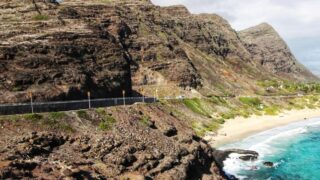
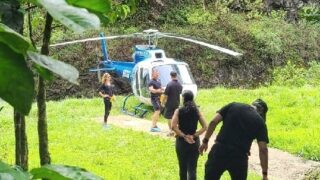
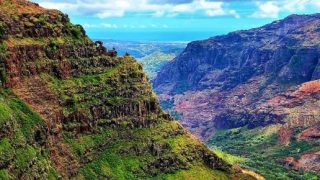
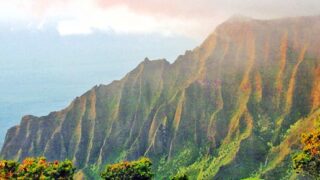
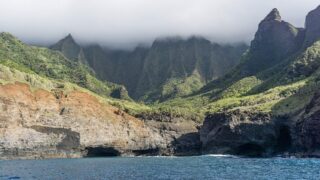
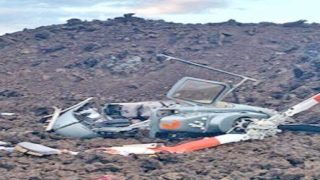
If a country such as the UK (with a current Robinson fleet of 300, yes, 300) can go for the last 13+ years with no fatal accidents with these helicopters, the question needs to be asked as to how they achieved that where other countries have not. It also demonstrates that Robinson helicopters are NOT “inherently dangerous”.
As a licensed ATP (Airline Transport pilot) with 4000 hrs of flying and a FAA license mechanic (A&P). The FAA sets rules for flight altitudes over residential and rural areas. We locals might complain, but as long as the pilot follows FAA rules not much can be done. The FAA checks the pilots and mechanics on a regular schedule for FAA compliance.
Kobe dying pretty much killed any desire I had to ride in a helicopter.
The interesting thing is that there are also small plane air tours that are making hourly trips from Lihue airport to Na Pali which are not as heavily regulated as the helicopter tours. The State Deoartment of Transportation who issues their permits says they have no jurisfiction over where they fly after they leave the ground! We see them flying over the densely- populated residential town of Kalaheo every single day, all day long. The noise is annoying; however, it it also a safety concern should there be an emergency causing a crash landing.
If you insist on flying on one of these helicopter tours, I would strongly advise you do your due diligence investigating a tour company’s safety record, whether or not they’ve received FAA infraction actions – and how many and how recently. Along with the age and type of aircraft they fly, and the experience and background of the pilots (I would avoid the Robinsons).
Best Regards
Exactly Jay! I have many veteran military helicopter pilot friends from back in the day, and they all say avoid all Robinson helicopters. Their safety record is not a good one.
Helicopters are not inherently dangerous. The people who own the companies are the culprits. Maintenance, pilots, type of aircraft and training are key. Robinson R-22 and R-44 are not made for Hawaii conditions. Doors off should be banned.